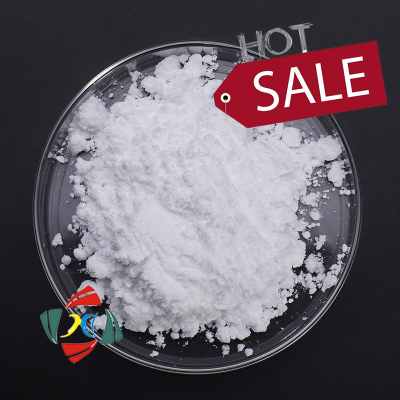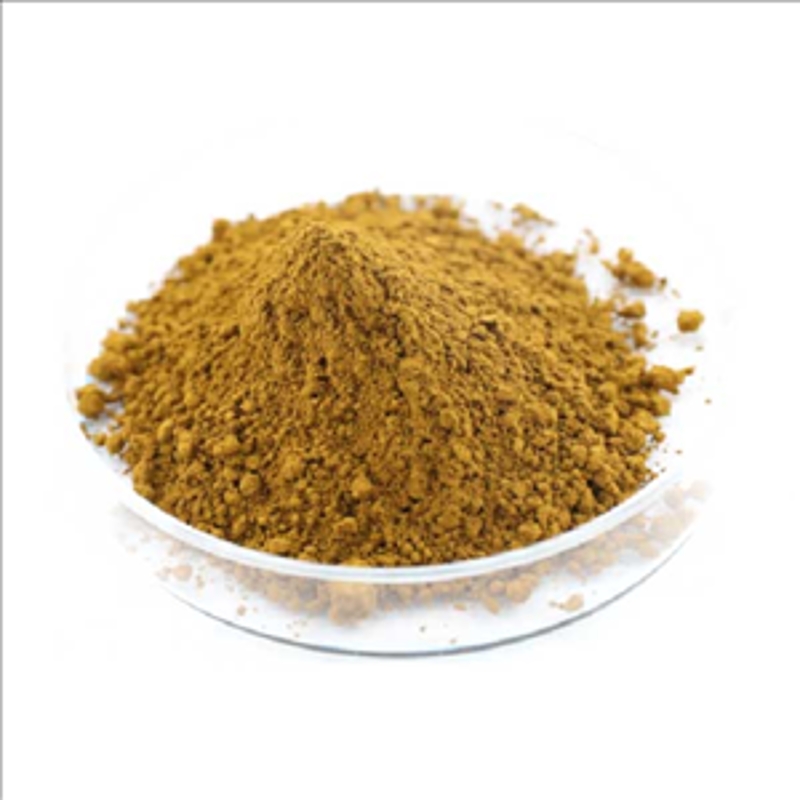-
Categories
-
Pharmaceutical Intermediates
-
Active Pharmaceutical Ingredients
-
Food Additives
- Industrial Coatings
- Agrochemicals
- Dyes and Pigments
- Surfactant
- Flavors and Fragrances
- Chemical Reagents
- Catalyst and Auxiliary
- Natural Products
- Inorganic Chemistry
-
Organic Chemistry
-
Biochemical Engineering
- Analytical Chemistry
- Cosmetic Ingredient
-
Pharmaceutical Intermediates
Promotion
ECHEMI Mall
Wholesale
Weekly Price
Exhibition
News
-
Trade Service
As winter gradually succeeds in various places, the frequency of sneezing and runny noses in people around them increases, as if colds and flu are somehow inextricably linked to winter
.
If you think about it, it seems that it is indeed more likely to catch colds, flu, and even the new crown virus in the winter, but so far there is still no clear mechanism, why?
A recent study published in the Journal of Allergy and Clinical Immunology answers this question
.
Studies have found that lowering the temperature in the nasal cavity by 5°C significantly reduces the activity of intranasal extracellular vesicles.
In other words, the presence of cold air impairs the immune response that occurs in the nose, allowing viruses and bacteria to take advantage, and the probability of upper respiratory tract infection in the human body increases
significantly.
In addition, in this study, the researchers provide the first biological mechanism to explain the occurrence
of this phenomenon.
org/10.
1016/j.
jaci.
2022.
09.
037 nasal passage is the first line of defense
In vitro experiments were carried out in human nasal mucosal epithelial primary cells (primary HNEpC), and the typical agonist Poly(I:C) of TLR3 was used to stimulate cells, and poly(I:C) was found to stimulate nasal epithelial EV secretion, and the secretion increased with time and dose, and there was no cytotoxicity
.
After confirming that the stimulation was effective, the effect was subsequently mediated by activating the TLR3-IRF3 signaling axis with a TLR3/dsRNA complex inhibitor or the IRF3 agonist KIN1148
.
The researchers then compared TLR3-stimulated EVs with unstimulated control EVs and confirmed that there were no significant differences
in characteristics.
Finally, the researchers investigated the kinetics of interepithelial transport of TLR3-stimulated EV in primary HNEpC, and found that at 37°C, cell uptake is rapid and gradually spreads throughout the
cytoplasm within 60 minutes.
However, under the pretreatment of chlorpromazine and the low temperature environment of 4°C, cell uptake was significantly inhibited by 87.
5%, and the diffusion rate was significantly slowed down
.
The results showed that low temperature had a significant inhibitory effect
on cell uptake of EV.
doi.
org/10.
1016/j.
jaci.
2022.
09.
037
TLR3-stimulated EVs exhibited potent antirespiratory viral activity
After it was clear that TLR3 stimulation significantly increased nasal epithelial EV secretion, the next step was to analyze whether these EVs had intrinsic antiviral activity
.
The researchers used coronavirus CoV_OC43, minor rhinovirus RV-1B and major rhinovirus RV-16 to construct upper respiratory tract pathogen models in primary HNEpC, and found that primary HNEpC generally had cytoplasmic vacuoleation, rounding and shedding, and showed that cytopathic effects and host cell immune responses had been successfully induced by viral dsRNA detection, confirming the success
of the model.
The TLR3-stimulated EV-mediated antiviral activity in vitro was then evaluated, and it was found that TLR3 stimulation may alter factor substances in EVs and confer EV-enhanced antiviral properties
.
doi.
org/10.
1016/j.
jaci.
2022.
09.
037
TLR3 stimulates upregulation of miR-17 in EVs to enhance antiviral activity
After it was clear that TLR3-stimulated EVs had antiviral activity, the researchers further explored the potential antiviral mechanism, and finally found that six miRNAs that were significantly upregulated after TLR3 stimulation and associated with antiviral effects were finally found through hierarchical cluster analysis and volcanic map data analysis, among which miR-17, which has been reported to inhibit viral replication during upper respiratory infection
, was used as the target of the mechanism of action to be verified.
The use of qPCR confirmed that TLR3 stimulation significantly increased the expression of miR-17 in EVs compared with unstimulated control cells.
In unstimulated control cells, miR-17 overexpression or silencing found that miR-17 inhibited viral RNA replication and significantly reduced CoV_OC43, RV-1B, and RV-16 viral mRNA levels in host cells, confirming the potent antiviral activity
of miR-17 against respiratory viruses 。 In TLR3-stimulated cells, miR-17 was also overexpressed or silenced, and miR-17 antiviral activity was found to be stronger in TLR3-stimulated-induced EVs than in unstimulated control cells, confirming that TLR3 stimulation upregulated miR-17 in EVs to enhance antiviral activity
.
doi.
org/10.
1016/j.
jaci.
2022.
09.
037
TLR3-stimulated EV surface receptor-virus binding
Contributes to antiviral activity and prevents virus entry into host cells
The researchers found that TLR3-stimulated EV surface receptor proteins could bind to the virus, preventing the virus from entering cells and binding to cell receptors, while unstimulated control EVs had no significant effect
on blocking viral infection.
The researchers analyzed the levels of LDLR, ICAM-1 and N-acetylneuraminic acid (NANA) in TLR3-stimulated EVs, which are involved in receptor-mediated endocytosis of RV-1B, RV-16 and CoV_OC43, respectively, and found that TLR3 stimulation upregulated LDLR and ICAM-1 levels in EVs, and NANA could not be detected
due to technical limitations.
To explore the role of LDLR and ICAM-1 in inhibiting viral infection in EVs, LDLR or ICAM-1 mRNA expression was silenced in TLR3-stimulated EVs, and LDLR or ICAM-1 silencing was found to weaken the interaction between the corresponding virus and TLR3-stimulated EVs, thereby facilitating viral entry into host cells
.
doi.
org/10.
1016/j.
jaci.
2022.
09.
037
Cold exposure impairs TLR3-dependent EV secretion
and miR-17 abundance
Thus eliminating antiviral activity
The researchers analyzed the effect of
cooling on TLR3-dependent EV function.
Through the human intranasal temperature gradient test, it was found that when the ambient temperature was reduced from 23.
3 °C to 4.
4 °C, the intranasal temperature at the level of anterior turbinates and middle and lower turbinates decreased by 6.
4 °C and 4.
7 °C
, respectively.
Based on the above experimental results, the method of reducing 5°C was used in vitro culture experiments, and it was found that TLR3-dependent EV secretion increased significantly at 37°C, while TLR3-dependent EV secretion
was significantly impaired at 32°C.
Next, the effect of cold exposure on TLR3-stimulated EV-mediated antiviral activity was studied, and it was found that TLR3-dependent EV antiviral activity decreased and miR-17 abundance decreased under cold exposure, indicating that cold exposure may eliminate antiviral activity
through this mechanism.
doi.
org/10.
1016/j.
jaci.
2022.
09.
037
Cold exposure reduces TLR3-dependent EV surface receptor protein expression and impairs antiviral activity mediated by surface receptor-virus interactions
At 37°C, the expression of LDLR and ICAM-1 in TLR3-stimulated EV increased significantly compared with unstimulated control cells, while when the temperature dropped to 32°C, LDLR and ICAM-1 in TLR3-stimulated EV were significantly impaired, indicating that the expression of surface receptor proteins LDLR and ICAM-1 in TLR3-stimulated EV was affected by ambient temperature
.
Further studies have found that cold exposure significantly impairs antiviral activity mediated by surface receptor-virus interactions, but has no significant effect
on TLR3-stimulated EV antiviral activity.
doi.
org/10.
1016/j.
jaci.
2022.
09.
037
brief summary
Upper respiratory tract infections vary seasonally, especially in winter, and infection rates increase because cold exposure impairs antiviral immune defense mediated by nasal epithelial EVs, which may be achieved by downregulating TLR3-dependent EV secretion and miR-17 abundance, and reducing TLR3-dependent EV surface receptor protein expression
.
Think about it, the arrival of the new crown makes us inseparable from masks, and the existence of masks can give the nasal cavity a certain warmth, indirectly protect the nasal immune defense mechanism, reduce the probability of respiratory virus infection, and is another reason to
wear masks.
Taha, Angela L.
Nocera, Alan D.
Workman, Mansoor M.
Amiji, Benjamin S.
Bleier, Cold exposure impairs extracellular vesicle swarm–mediated nasal antiviral immunity, Journal of Allergy and Clinical Immunology, 2022.
doi.
org/10.
1016/j.
jaci.
2022.
09.
03 Source: | Biovalley
by | Edit
| cici
Click "Read Original" below to download the Mace Medical APP!







